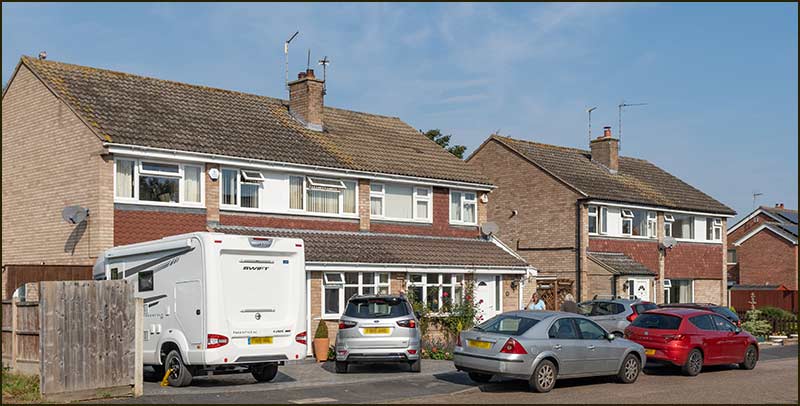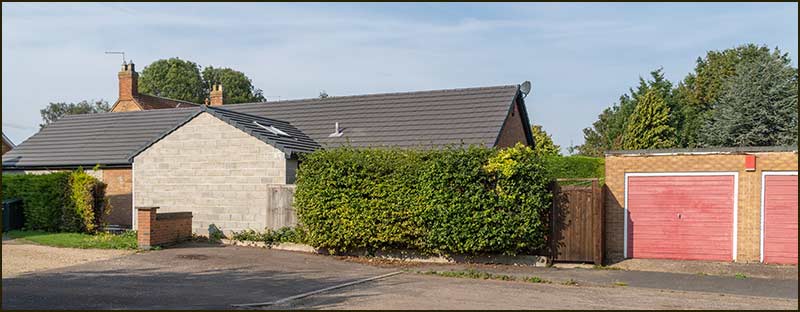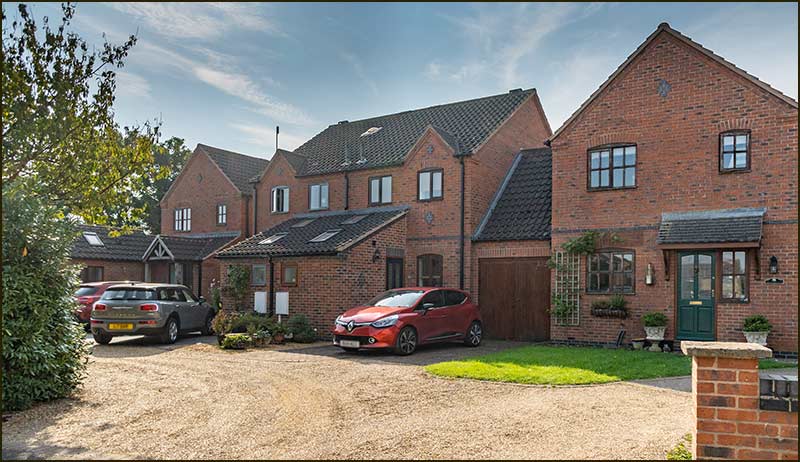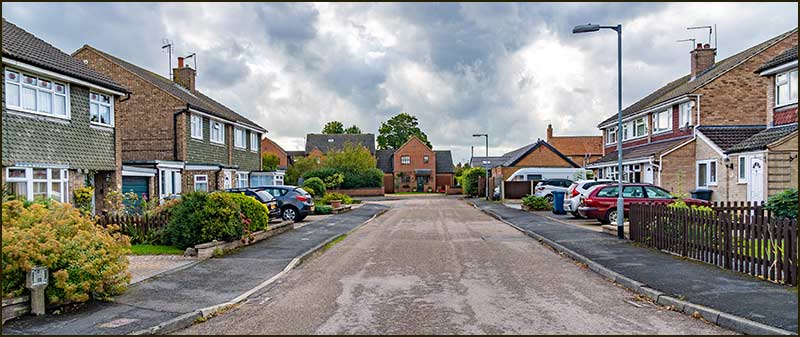Cropwell Bishop Streets: — Smiths Close (13-4-21)

Smiths Close is one of the smallest streets amongst those built during the village building-boom of the 1970s. It differs in other ways too.
When Wimpey began building the second phase of estate building (after the Bells Estate was built), St Giles Way was the entrance to it.
The show houses were at the top end of St Giles Way and the Wimpey site office and storage area was on the left-hand side – where Smiths Close now is. Consequently, the houses on Smiths Close were not built until the site office and stores were taken down – which wasn't until all the other homes on that side of the estate had been completed.
Even then, the Close did not have the houses that it has now. The far end was a grassy area with a few trees and there was a wooden bungalow still standing from decades earlier.
In the right-hand corner was the brick bungalow that was also there before Wimpey began building.
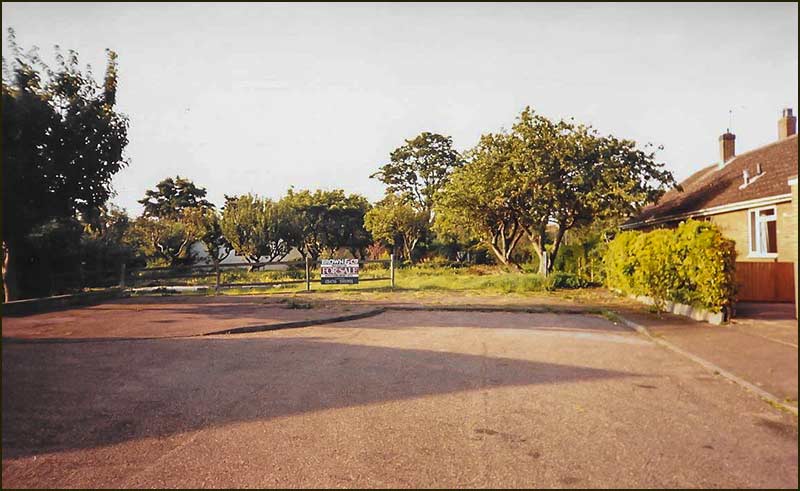

It was in 1999 that new homes were built in place of the wooden bungalow, trees and grass.
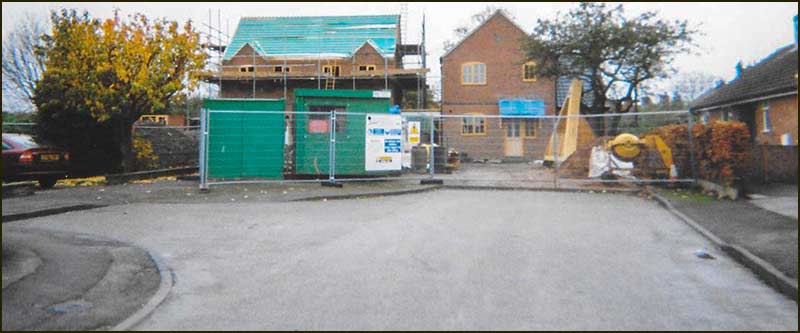
So we know the history of homes on Smiths Way, but now we need to find out how it got its name.

The Smiths
Notice that, in the street name, Smith is plural, which is a relief, because there is no shortage of candidates for the street name.
As usual, my first step was to look at the 1804 Enclosure map because that is what parish councillors repeatedly did when they had to choose a street name.
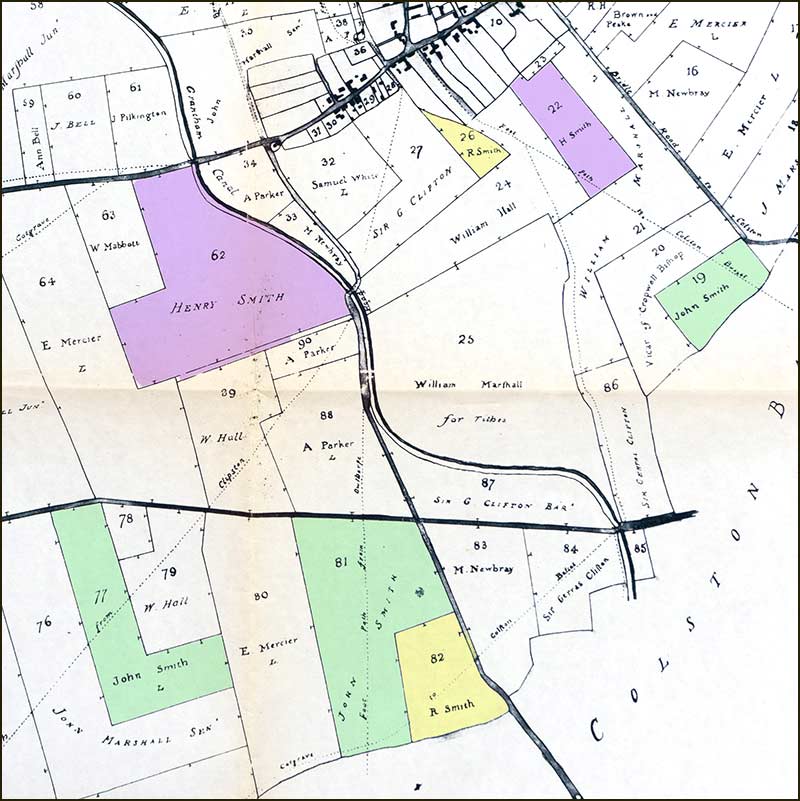
Of all the names on the map, there are three with the name Smith: Henry Smith, John Smith and R. Smith (first name, Richard, as revealed in the map’s accompanying documents).
First, we need to discover which, if any, of these Smiths might have inspired our councillors to name a street after them.
Henry Smith had the most land of the three, 48 aces, but my research reveals that no Henry Smith lived in Cropwell Bishop at that time, although Cotgrave and Cropwell Butler had, between them, three Henry Smith’s. I decided to drop him from my considerations because the other two Smiths were well established Cropwell Bishop men, so far more likely candidates.
In spite of Smith being a very common name in England, only one Smith family appears to have lived here at that time — or, at least, was the dominant one.
To avoid confusion, we must consult the family tree to see where John and Richard Smith fit into the picture. We need to examine it with care, because the Smiths made repeated use of Richard and John when naming their babies.
Starting at the top, the ‘father’ of this sector of the Smith family tree is the Richard Smith born in 1726 and married to Ann Morris.
Richard was the village baker and owned the corn mill so an interesting character, no doubt. However, he did not own any of the land on the Enclosure map because he died two years before its publication.
Richard and Ann had five children. Eldest son, John Smith, inherited the farming business, second son, William, the corn-milling business and Richard (junior) the bakery business. His daughters were not forgotten; they inherited money.
In 1804, John would have been 53 years old and his brother Richard, 45. Were they, I wondered, the John and Richard Smith, on the Enclosure map. A published copy of their father’s 'last will' provides clues.
In the will, it was John who inherited virtually all of his father’s land, over 46 acres. William did inherit some land around the windmill on Fern Road, plus a few acres near Hoe Hill, but since his name was not on the 1804 map two years later, he must have sold it.
The third son, Richard, did not inherit any land from his father, so I doubt he was the ‘Richard Smith’ on the map.
From the family tree, it is not difficult to locate a more likely Richard Smith.
John Smith married Grace Waner in 1779 and they had three children, Richard, John and, Sarah. Richard was the eldest and in 1804 he would have been 24 years old. His brother, John, would have been only 11 years old in 1804.
It is my belief that the landowners on the 1804 map were John Smith (born 1751) and his son, Richard. I think they would have been at the forefront of the minds of parish councillors when choosing the name for Smiths Close – especially so because they could appreciate how their influence in the village would grow in the coming years.

Let’s look at how the careers of the two brothers, Richard (born 1780) and John (born 1796), evolved in the 1800s.

The Sons and Daughter of Richard Smith (senior)
Richard married Sarah Cotton in 1811 and they became tenants of the Fillingham Farmhouse on Church Street (it was replaced by Ebenezer House in 1904). From there he could farm the land he had inherited from his father.
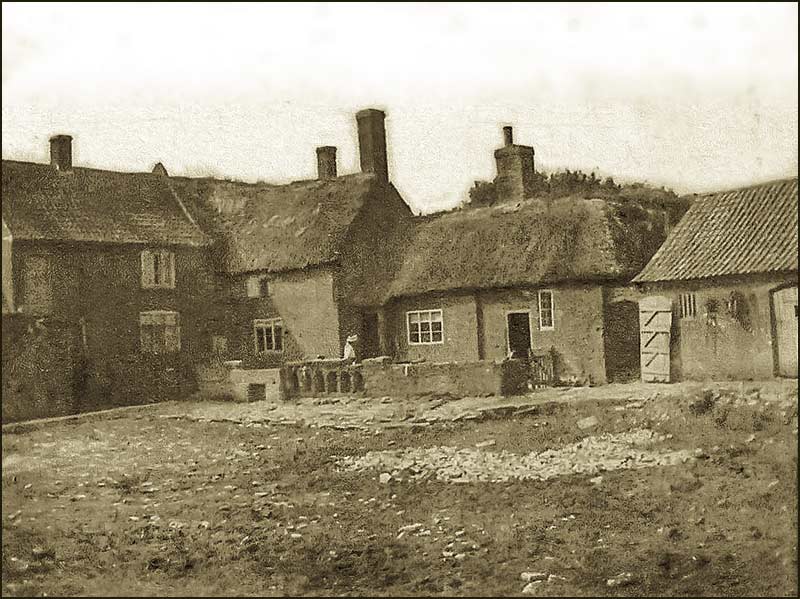
Richard and Sarah had three children, William, Richard and Grace. Notice how the Smith family loved to recycle family names.
In the coming years Richard took on the lease of more and more land and by 1837 he was farming over 153 acres in Cropwell Bishop. By then he was 57 years old, an age when most men might be looking towards retirement and a quieter life. Not Richard Smith.
In 1840 he had a new house built for him and his family. The building was on Colston Road and it was the Lime Kiln Inn. Nowadays, it is the ‘Small People’ outdoor nursery.
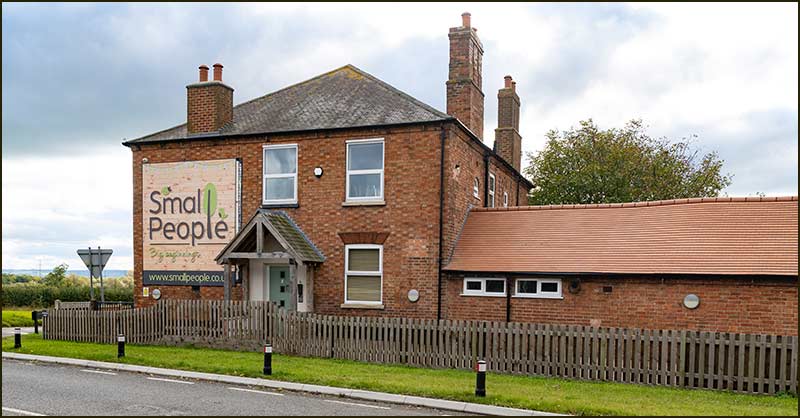
Richard’s wife, Sarah, died after 16 years at the house but he lived for another 10 years and died at the age of 86.
Richard’s sister, Sarah, married in 1811 (the same year as Richard) to a Richard Harrison from the small hamlet of Staunton in the Vale, which is about 5 miles north-east of Cropwell Bishop. Even today, Staunton has little more than a few farm buildings so it is quite likely that Sarah married a farmer.
Nothing more is known of her life there but we do know that she died when she was 52 and is buried alongside her father in Cropwell Bishop.
Meanwhile, Richard’s younger brother, John, probably dreamt of increasing his own wealth. His marriage to Ann Hall of Cropwell Bishop in 1821 would help his dreams come true.
John was farming land owned by his father (which he would go on to inherit) and other rented land, but Ann had offered, not only herself at their marriage, but also the promise of land and property.
When her father died 9 years earlier, she was awarded a house and 20 acres of land in his will, but they would not become legally hers until her mother died.
Following their marriage, they moved into The Yews farmhouse on Nottingham Road. As John’s wealth and power increased, it is said that he assumed the title of ‘lord of the manor’ for himself.
In 1835, Ann’s mother died and she finally inherited the house and land promised in her father’s will.
In 1841, John bought Lenton House — just 100m up the road. He greatly enlarged and improved the house and its outbuildings before moving in with his family.
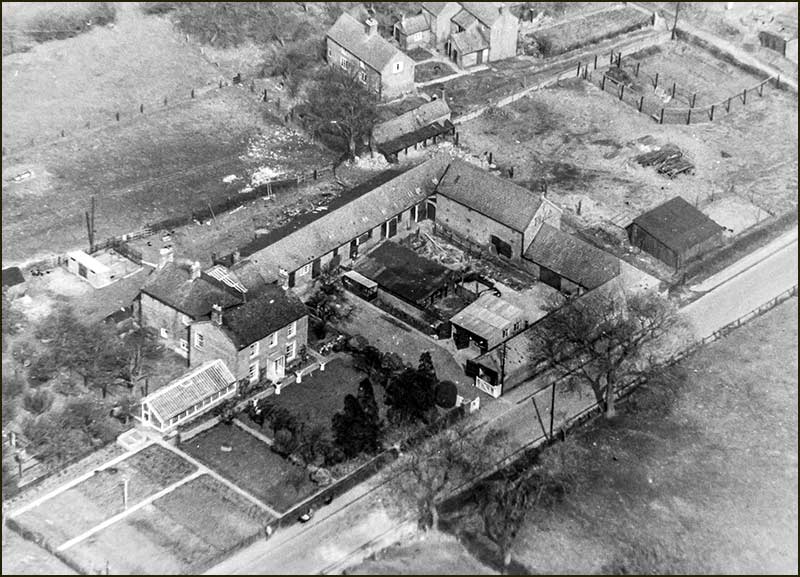
(1960s photo)

It is interesting to note that this building was likely built by the same builders who had just completed the Lime Kiln Inn, Richard’s new house.
Both buildings had the year of their build displayed in similar, giant numbers in their brickwork. The Smiths were clearly becoming big players in the village.
By 1850, John owned the largest farm in the Cropwell Bishop with 180 acres of land.
John and Ann live out their lives at Lenton House. Ann died in 1868 at the age of 67 and John lived to be 85. On his death in 1881, his daughter, Elizabeth, and her family moved into Lenton House.
So, when we look at the Smiths Close street sign, who should we think of?
There is no doubt that the Smith family we have studied is the source of the name, and I think it was the intention of our parish councillors to celebrate a number of Smiths for their contribution to Cropwell Bishop life.
If a visitor were to ask you the question, a safe answer would be to say, “John and Richard Smith” — then you will be covering all five of the most influential members of the family in the 1800s.
Tony Jarrow
Note:
Thanks to Anne Terzza for her help with this article.

Smiths Close in 2020
